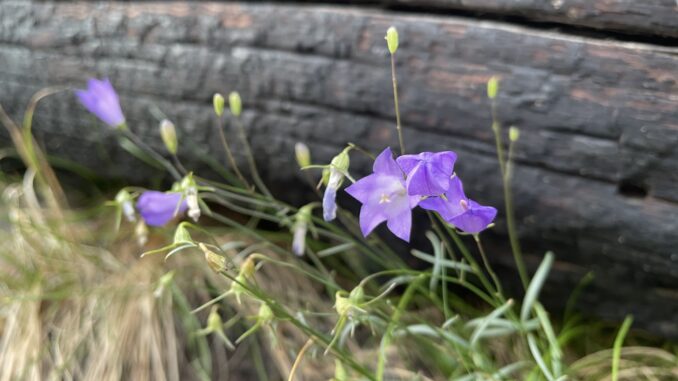
Angelina Hunter | North Forty News
We all dread hearing about yet another wildfire that consumes tens of thousands of acres of forests, often public lands. But when a wildfire such as the High Park Fire sweeps through, often it destroys private property as well.
Initially, the devastation of a wildfire is so far-reaching that it’s hard to imagine the area coming back to life — ah, but nature is indomitable. While, by human calculation, it might take some time it always springs back eventually and when it comes to early signs of life such as wildflowers, it can seem surprisingly fast.
Sometimes burn property acreage goes on the market, often at a reduced price. That’s where folks of hope and vision can assist Mother Nature by acquiring the property and beginning to cut down partially burned trees which still present fire hazards when the next wildfire sweeps through nearby with sparks that can travel miles.
As a city dweller, I wouldn’t know much about all this if my colleague and friend Blaine Howerton hadn’t purchased a small acreage of burn property. These past few years I’ve been following his progress and seeing his photos of wildflowers bravely springing forth to produce such brilliant colors in a backdrop of charcoal and ash.
And I was also surprised to learn of his recently setting up a sawmill that takes partially burned trees and salvages good planks of lumber from trees that are unsightly, a future fire hazard, and otherwise viewed as just deadwood.
When I asked Blaine to tell me more about burn property, he provided the following firsthand information:
Burned trees, when cut down, should be scattered horizontally across any hills to prevent erosion until nature brings back flowers and grasses which help to anchor the soil. And using some cut trees alongside roads and drainage areas slows water runoff.
Burned trees are naturally kiln-dried. Surprisingly, this protects the wood inside the tree and makes it naturally ideal to use as lumber, for perhaps 10 years or more. But birds love to perch on dead branches so don’t cut them all down. And once the tree is on the ground it starts decaying. In decaying trees, however, beneficial insects provide food for birds (and other animals), and help the forest come back to life.
Find the balance and you will have a beautiful place in the years to come!
Support Northern Colorado Journalism
Show your support for North Forty News by helping us produce more content. It's a kind and simple gesture that will help us continue to bring more content to you.
BONUS - Donors get a link in their receipt to sign up for our once-per-week instant text messaging alert. Get your e-copy of North Forty News the moment it is released!
Click to Donate